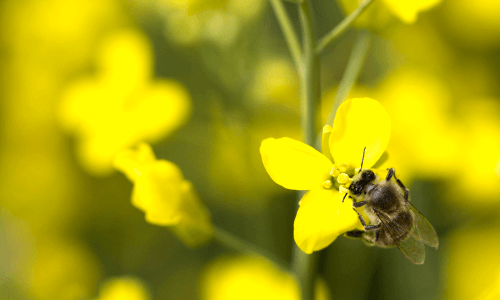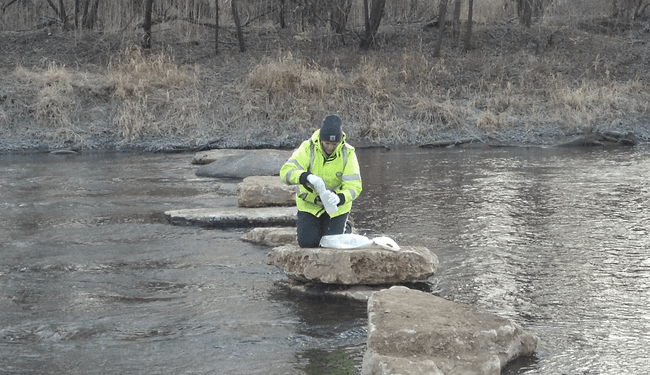

Neonicotinoids are still used widely in the U.S. (despite many calls from environmentalists to stop usage), and not only are they found in our crop fields, they are also being detected in our waterways. Over on our shores, the USGS conducted its “first national-scale investigation” of the environmental occurrence of neonicotinoid insecticides in agricultural and urban settings, according to a press release.
In the study, conducted from 2011 to 2014 and spanning 24 states and Puerto Rico, at least one of the six neonicotinoids tested by USGS researchers was found in more than half of the sampled streams. Detections of the six neonicotinoids varied: imidicloprid was found in 37 percent of the samples in the national study, clothianidin in 24 percent, thiamethoxam in 21 percent, dinotefuran in 13 percent, acetamiprid in 3 percent and thiacloprid was not detected.
Study finds that the same pesticides killing #bees are now contaminating waterways http://t.co/XOWZQAm91m pic.twitter.com/a72PTnpQjE
— Greenpeace (@Greenpeace) August 20, 2015
“In the study, neonicotinoids occurred throughout the year in urban streams while pulses of neonicotinoids were typical in agricultural streams during crop planting season,” said USGS research chemist Michelle Hladik, the report’s lead author.
No concentrations exceeded the U.S. EPA’s aquatic life criteria, and are unlikely to be carcinogenic to humans, the release said.
“The occurrence of low levels in streams throughout the year supports the need for future research on the potential impacts of neonicotinoids on aquatic life and terrestrial animals that rely on aquatic life,” said USGS scientist Kathryn Kuivila, the research team leader. “These results will serve as an important baseline for that future work.”
Saving our pollinators is crucial to humanity’s survival. According to Greenpeace, wild and domestic honeybees perform about 80 percent of all pollination worldwide, and 70 out of the top 100 human food crops—which supply about 90 percent of the world’s nutrition—are pollinated by bees.
Still, it appears that the worrisome decline in honeybees is getting even worse. A recent government study reported that the U.S. honeybee population has plummeted more than 40 percent from April 2014 through April 2015, much higher than the 34.2 percent from the year prior.
President Obama announced the creation of the Pollinator Health Task Force this past June and signed a Presidential Memorandum that recognizes the severe losses in the populations of the nation’s pollinators, including honey bees, wild bees, monarch butterflies and others.
YOU MIGHT ALSO LIKE
Humans: The Worst Predators on the Planet
Earth Is Facing Most Severe Extinction Crisis in 65 Million Years
David Suzuki: How You Can Help Bring Monarch Butterflies Back from the Brink

 233k
233k  41k
41k  Subscribe
Subscribe 
